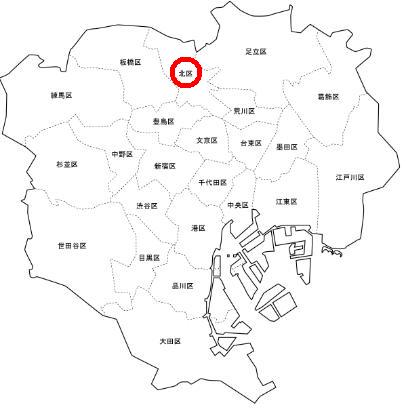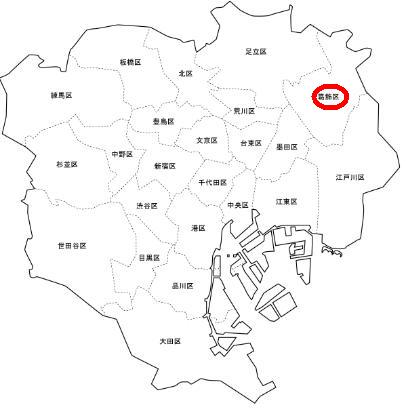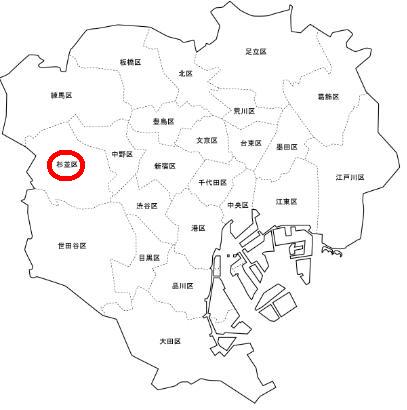
Minato City is located slightly south of the center of Tokyo’s 23 wards and is a central business district with the largest number of corporate headquarters.
Minato City Sightseeing Spots
The area is also blessed with a rich natural environment, with commercial areas such as Aoyama and Akasaka, entertainment districts such as Roppongi, residential areas such as Azabu and Shirokanedai, Shiodome and Daiba, the Crown Prince’s Palace and State Guest House (Akasaka Detached Palace), Shiba Park and the Nature Education Garden in Shirokanedai.
There are many foreign embassies and foreign-affiliated companies in Japan, and foreign residents account for about 10% of the population.
There was a proposal to name the ward “Minato-ward” as “Tokou-ku” (East Port Ward), but it was difficult to pronounce “Tokou-ku” in Tokyo, so the “East” was removed and the name “Minato-ward” was chosen to mean the ward at the center of Tokyo Port.
Shiba Park
4-10-17 Shiba-Koen, Minato-ku, Tokyo
Shiba Park was established in 1873 and is centered around Zojoji Temple. There are a hotel, a school, and a library in Shiba Park, as well as the Shiba-Maruyama Tumulus and the Maruyama Shell Mound. The Tokyo Tower is located at the west end of Shiba Park, and the east side of the park, with the Tokyo Tower in front of it, is especially famous as a date spot and filming location.
Suntory Hall
7-4, Akasaka 9-chome, Minato-ku, Tokyo
Suntory Museum of Art is an art museum run by the Suntory Art Foundation, which collects Japanese antiques. It is located in the Gardenside of Tokyo Midtown. The museum’s major collections include the National Treasure, Tebako (Box) with Makie lacquer-work in mother-of-pearl inlay, Minamoto no Shitago-zo (Portrait of Minamoto no Shitago-zo, Important Cultural Property), Zenkobo Eshin-ga (Ink painting on paper), Four pieces and one twin, Tai and Western Royal Riders, gold-ground and color on paper, Nanbanjin no tôrai zu (The Coming of the Nanban), Six pieces and one twin, gold-ground and color on paper, and Nanbanjin tôrai zu (The Coming of the Nanbans). A large octagonal jar with flowers and birds in overglaze enamels, Imari, A large flat bowl with five ships in overglaze enamels, Imari, A three-legged dish with pine tree design in overglaze enamels, Nabeshima, A pair of plates with a pine tree design in overglaze enamels, Nabeshima The design is in maki-e maki-e lacquer, and the design is in maki-e maki-e lacquer.
Tokyo Tower
4 Shiba-Koen, Minato-ku, Tokyo
Tokyo Tower is a radio tower in the Tokyo area that was completed on October 14, 1958. It is positioned as a spare radio tower because the Tokyo Sky Tree was newly built, but I think it is a masterpiece that Japan should be proud of, representing the Showa period (applause). The steel used from the special observation deck up to the top of the tower was made from American tanks that were scrapped after the Korean War because there was no high-quality steel available in Japan at the time.
Rainbow Bridge
3-33-19, Kaigan, Minato-ku, Tokyo / between Shibaura and Daiba
The Rainbow Bridge is a 798-meter suspension bridge connecting Shibaura and Odaiba in Minato Ward, Tokyo. Construction began in 1987 and was completed in 1993, opening to traffic on August 26 of the same year. The Rainbow Bridge is part of the Metropolitan Expressway No. 11 Daiba Line, and its official name is the Tokyo Port Liaison Bridge (Rinko Doro). The bridge is a two-tiered structure, with sidewalks on both sides of the lower level, making it possible to cross on foot. Please try to walk across. It is a wonderful view.
Tokyo Gate Bridge
Reclaimed land outside the central breakwater – Wakasu, Koto-ku
The road is scheduled to open on February 12, 2012. There is also a sidewalk and the sidewalk hours are from 10:00 to 17:00, and during the summer ( July 1 to September 30)) and 10:00 to 20:00 on Fridays and Saturdays. The sidewalks will be open from 10:00 to 20:00 on Fridays and Saturdays during the summer season (July 1 to September 30).
Sengakuji Temple
2-11-1 Takanawa, Minato-ku, Tokyo
Sengakuji Temple is known as the burial place of Naganori Asano, the third lord of the Harima-Ako clan, famous for “Chushingura”, the Genroku Ako Incident, and the Ako Ronin. There is also the tomb of Kaemon Takashima, who is known for “Takashima Eishan”. Sengakuji Temple is a Soto sect temple and is one of the three temples in Edo along with Seishoji Temple and Sosenji Temple.
Statue of Liberty
1-4 Daiba, Minato-ku, Tokyo
The Statue of Liberty in Odaiba is a bronze replica of the Statue of Liberty installed in 2000 at the Coubertin Foundry in France, and is an official replica approved by the French government. It is also known as the “Daiba Goddess of Liberty”.
Aoyama Cemetery
Minamiaoyama, Minato-ku, Tokyo
Aoyama Cemetery was first built in 1872 (Meiji 5) on the site of a villa of the Aoyama family, the feudal lord of the Gujo Domain in Mino Province (present-day Gujo City, Gifu Prefecture). Today, the cemetery is a metropolitan cemetery, and there are many graves of famous people from the Meiji period onward, and Hachiko, the loyal dog, is also laid to rest here. The cemetery is famous for its cherry blossoms and is crowded during the cherry blossom viewing season.






